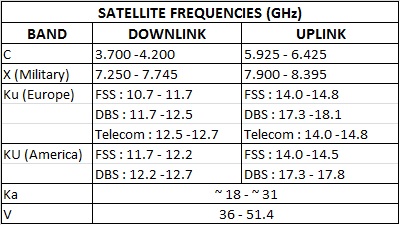
The downlink centre frequencies used in this study are 4200 MHz, 7750MHz and 11200MHz for C-, X- and Ku-bands respectively. The simulations assume a 1.8m receive antenna with 65% aperture efficiency, QPSK modulation and use of either vertical or horizontal polarization. A simulation model based on the ITU-R P618-10 rain model is used to predict the rain attenuation in the C-, Ku- and X-bands in 15 different locations with varying rainfall intensities of between 145-300 mm/hr in East and West Malaysia. In this paper, the effect of rain attenuation on the FSS allocation in the 7250-7750MHz in the Space-to-Earth direction is studied for a satellite at 78.5☎ longitude. With this article, we intend to share our insights and lessons learned. We believe that many of the issues we encountered during our work in the GITEWS project (German Indonesian Tsunami Early Warning System, Rudloff et al., 2009) on the design and implementation communication architecture are also relevant for other types of warning systems. Based on an analysis of the criticality, vulnerability and availability of communication means, we describe the design and implementation of a communication system that employs both terrestrial and satellite communication links. Yet, the communication infrastructure is likely to be affected by the disaster itself. Moreover, a failure to deliver a warning has fatal consequences. Similarly, the geographic spread of the potentially affected population is wide. They are often located in remote areas and belong to different organizations. Its sensors are typically very heterogeneous and spread several thousand kilometers apart.

Designing the communication architecture of an EWS against tsunamis is particularly challenging. While its sensors are the "eyes and ears" of a warning system and enable the system to sense physical effects, its communication links and terminals are its "nerves and mouth" which transport measurements and estimates within the system and eventually warnings towards the affected population. This article discusses aspects of communication architecture for early warning systems (EWS) in general and gives details of the specific communication architecture of an early warning system against tsunamis.


 0 kommentar(er)
0 kommentar(er)
